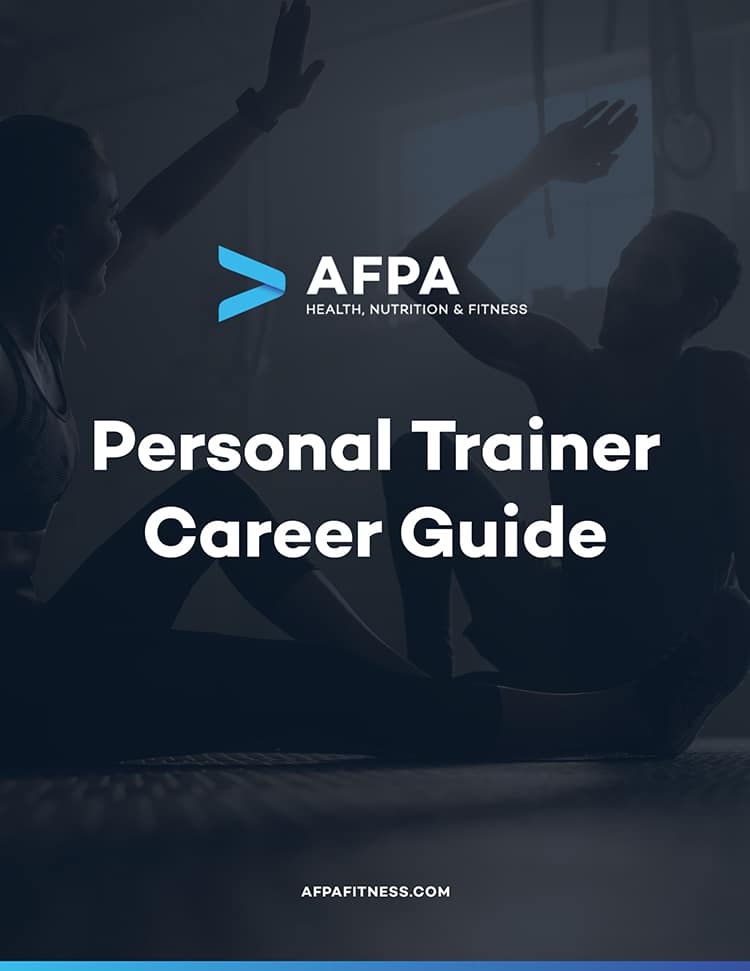The Art and Science of Personal Training
Personal Training really is an art & a science. While it is important to know both, I am going to focus on the art of Personal Training with some behavioral science techniques that will help you in guiding your clients towards lasting change.
During my 20 plus years being a Personal Trainer, I have become completely convinced that a person’s fitness level is primarily determined by how they see themselves in their own mind. If someone can use their imagination to picture themselves as fit and healthy, then this image prompts consistent fitness & lifestyle activities and a pursuit of improvement. This is a simple idea, but there are very specific things that must be done – deliberately and thoroughly – for the image to take roots.
Prior to studying Neuro Linguistic Programming (NLP), I’d ask clients the old standard question, “Why didn’t you work out?!” What always followed was their glamorous fabrication that would tug on my heart strings (my kids aren’t sleeping, work is very demanding, my wife doesn’t give me the time to work out, etc.). Then I would let them off the hook, try to be positive and encourage them to do better next week.
The field of NLP was co-created by Richard Bandler and linguist John Grinder in the 1970s. They asked themselves a simple yet fascinating question: What makes the difference between someone who excels at a skill and someone with basic competence?
Their initial focus was pragmatic, modeling three successful psychotherapists, Fritz Perls (Gestalt Therapy), Virginia Satir (Family Systems Therapy), and eventually Milton H. Erickson (Clinical Hypnosis), with the aim of discovering the successful patterns of behavior and communication which distinguished these individuals from their peers.
From this they developed technology around how we take in information through our senses (neurology), translate it into language (linguistic), and make patterns or mental models (programs) that influence our behaviour. With this powerful technology we can foster greater self-awareness, natural change and personal excellence and it is also very powerful tool for trainers to support clients in achieving this goal. This is the science of personal training.
Learn How to Become a Certified Personal Trainer Online in Less Than 6 Months

The Consult
This is always fun for me because I like to meet new people and during these first sessions I like to get to know the person as much as I can. To do this you have to first develop a strong rapport with them, getting in tune with them and creating trust.
Building rapport is not something that you can fake because it comes from a level of intentions. Do you intend to train the client to make some money or intend to be fully present at the consult/training session with a genuine acceptance and love for this person and where they are at? There is a big difference between these intentions and I think it is important to set your intentions before every training session. Go into each session with a positive state of curiosity and creativity so that you convey to your clients that change is possible.
In order to really build rapport you can start to practice mirroring and matching. This simply means that you take on their state by matching their tone of voice, the pace of their breathing and their postures to name a few. Basically you will be copying them. It might feel unnatural at first but when done with the right intentions you will get good at it.
You do it already; did you ever sit and chat with a close friend and notice that you both were leaning into the chair the same way and both had the same leg crossed? This is because you are in true rapport with them. No work or conscious attention/effort was needed. This is also the best way to gain rapport with someone that you are working with. Imagine they are a very close friend and your body language, the way you speak and your attitude will align with theirs and this unconsciously sends out feelings of familiarity and comfort.
One caveat for mirroring and matching is that you have to be careful not to get caught up in the same feelings they are accessing. You need to have empathy and be engaged but also aware of your state as you may need to “lead” (which means taking them from one state to another more desirable state based on their goals) them into another state.
On the gym floor I also use this technique. If they are down doing pushups I get down too, in the trenches and meet them at their level. I also do not cross my arms during a session. I sometimes see trainers do that and it conveys a closed attitude and energy and most likely they are not operating at the right level of intention.
Goal Setting (ugh)!
Much of my initial consultation focuses on writing down their goals and for a few reasons people don’t always like to do this. I am pretty sure some of them would rather do Burpees! Many people say they can’t be bothered to take the time to sit and write them out, preferring to keep them in their heads but it only takes a few minutes. The real reasons they don’t want to write them are probably deeper, involving the fact that if they are kept in “the head,” it is easy to change, revise and ignore them. This avoids accountability issues.
There is also a fear of failure. If goals aren’t written down, we can change them to match what is actually achieved. Furthermore, many people make the mistake of setting goals that are easily attained in order to avoid failing. This is a form of unconscious self-sabotage. They end up going through life functioning at sub-optimal levels rather than at the level they are truly capable.
Another is a fear of rejection. People don’t set clear, written goals because they fear they will be seen by others as ridiculous if they fail. They don’t want to face criticism or be seen as not capable or worthy. This is one reason to keep goals confidential when you begin to start out with goal setting, with the exception of sharing with your coach, mentor or a trusted peer.
In terms of writing the goals down most people write down what they are trying to avoid. “I want to lose weight”. This is where you are now and what you are trying to move away from. This is not a goal. The problem with this is that whatever we hold in our conscious attention, our unconscious seeks to achieve. We become what we think about, most of the time.
It works like this: Remember the first time you decided on a car you were going to purchase. You knew the model you wanted and pictured yourself driving it. Suddenly, you started to see this car all over the place, dealerships magically popped up on routes that you drive all the time and car ads in the paper calling out to you! They were there yesterday and the day before but now your unconscious is directing your attention to a clear goal. That’s the power of the unconscious, following your orders and responsible for most of your results.
“Hold a picture of yourself long and steadily enough in your mind’s eye and you will be drawn towards it” Dr. H. Fosdick
To help write, think about and achieve our goals I think it is useful to to know the differences between the conscious and unconscious mind. The conscious mind is whatever you are paying attention to via the senses. For example if I direct your attention to the feeling of your butt on your chair as you sit and read this or the hum of the computer, this is your conscious mind at work. What we focus on through our conscious attention often enough gets stored as an unconscious program.
Take driving for example; you used to put both hands on the wheel at 10 and 2, pay careful attention to what is around you and it took time to get the feel for how hard to press the gas and brake. Now you talk on your cell phone and eat a bagel and get to work wondering if you stopped at the red lights! And that is how our day goes. We have a program for brushing our teeth, a driving program, and work programs, how we speak to others, etc. Most of what we do during the day is unconscious. We run on programs that we have created ourselves. The good news is that because we made these programs ourselves, we can make new programs.
Psychologist say we have 60,000 thoughts every day. Depending on what you consistently think about, the unconscious mind will start to write a program. Imagine your unconscious mind as the film in a camera, with unlimited exposure. Every time the conscious mind takes a picture, it is imposed on the film. The pictures stored there are what you’re unconscious seeks to achieve. It will make you “feel like” going for a jog or lying on the coach and willpower cannot be used (long term) as a crutch to these powerful (self) images.
When you have clients “struggle” through weight problems and cravings, their unconscious is doing its job beautifully, it’s the presentation that is wrong. And to make matters worse, any frustration reinforces stronger images of a “fat”, frustrated person.
“Ideas are changed, not by Will, but by other Ideas.” Maxwell Maltz, M.D., FICS
So what to do? Become Spielberg! You are the director of your own movie so write the script for YOUR movie. How much fun is that! Start by writing in the future tense- as if it exists today. Dream big; write out what you are afraid to think about- if it feels uncomfortable you are right on track. The key is to write and think about this awesome movie often- to have a clear vision- so that you are drawn to and see opportunity everywhere, just like when you decided on that car.
Here is an example from a client; “I am lean at 15% bodyfat, I weigh 120 lbs and I look drop dead gorgeous in that red dress, I have enough energy to mountain bike up the mountains, Banff is so beuatiful in the spring, with my husband by my side. We are having a great time, I can feel the crisp morning air fill my lungs and flow through my hair. We are admiring the beauty of the hillside, the trees are in bloom and the birds are singing. My husband tells me what a great idea this was and how great my legs look when I sprint up ahead of him.” I don’t know about you but I get shivers when I read this and you know what, she wrote this 6 months before actually doing it!
Now will you fall off the wagon? Hit the gravel on the side of the road? Yes of course you will. But the key is to not focus on the ditch you are about to drive into, rather look down road at your goal. You may need to do this several times every day. But this really is the key and remember any frustration strengthen the old images so look down the road again and see the goal. High performers know and do this often.
The other thing clients write down as their goals are really just processes. They write down that they have to drink more water, eat better and exercise more. This is not a goal but a list of things to do.
Tips and Tricks- in session
Now let’s talk about a few “tricks” you can use to keep your clients on track. One of my favourites is actually so simple. It allows for them to formulate in their own mind and verbalize what they need to do. The key is to not jump in and do the work for them or give them the answers although sometimes they will need you to prime the pump a bit (as they are not used to thinking about, seeing in their own mind- how amazing they look). If they say they didn’t workout that week or ate poorly then you ask;
1. What will happen if you don’t?
2. What will happen if you do?
Make sure and get 3 answers for each and do not acknowledge excuses (do not give any emotional attention to). For #2 they can work on their movie. Actually talking about this may be even harder for them than writing about it. But it does feel good once they get used to it.
Sometimes your clients will get on a negative loop and fight really hard for their limitations so what I have found works here is to ask them a weird question like “What is your mother’s maiden name?” They will stop, look at me weird and answer. This is called a Pattern Interrupt and it is designed to get them out of the loop of negative thinking they were in (it’s a habit and no doubt they do it often). The first time you create this mild state of uncertainty (it could also be done in other ways such as dropping a pen or tying your shoe) you will be surprised at how their state has changed, as if they are stuck looking for what will happen next. This gives you the opportunity to suggest another outcome or ask them about their movie.
Another technique is “reframing”. For example when a client says, “I am too old to get lean”, you can ask these types of questions; “According to whom?”, “What can you do now that you could not do two months ago?”, “Has anyone your age ever been there before”? These questions take a client from a one sentence generalization to pictures of how great they now look dropping 2 dress sizes, and how they can lunge across the gym floor with 25lb dumbbells and how they inspired their daughter to get into an exercise class, etc. It really is amazing! It is best to listen intently and let them start to formulate their answers.
One final and powerful technique is the use of “Anchors”. An anchor is basically a response to a certain stimulus. I’m sure you have heard of Pavlov’s dogs where the dogs learnt to associate the sound of the bell with food. We too have many anchors set up in our physiology. For example, you might think of home when you smell apple pie baking or if someone touches your shoulder there is an immediate thought of your basketball coach telling you to get in the game. Anchors can be set up to help your clients achieve specific results.
As a means of eliciting a client to “feel like” working out you can ask them to recall a time when they had a particularly awesome workout. Then guide them to remember the experience fully. At the peak of this visualization they can set a psycho-physiology cue or anchor. This could be a phrase or a physical movement. This visualization works because the mind cannot tell the difference between what is imagined and the anchor sets the experience in their physiology which they can now access at any time. Anchors can be set for feeling relaxed in public, performing well in sports, etc.
In the beginning of my PT career I always thought that my job as a PT was to get fired! To teach my clients enough to be self sufficient so that they can go out and train safely and effectively on their own but what NLP made me realize was that my role was not just to teach them about exercise. They could care less what a brachial radialis is. They just want results and this comes from coaching them with the behavioural sciences so that they will actually change the way they see themselves, feel like working out and be motivated long term.
It has been an amazing journey and if you do your job right it is actually tough to get fired. I have built some strong relationships, seen their kids grow up, enjoyed many tough workouts and trust me, the mentoring has gone both ways.
Now you know the some of the art and science of personal training! I hope you have found this information interesting and when practiced you notice that is useful. Have fun with it and enjoy!
Your friend and coach,
Marc Lebert
Marc Lebert is the owner of Lebert Fitness Inc. a world leader in developing innovative fitness training tools. He is a Club Owner, Black Belt competing at a National level, a Certified NLP (Neuro-Linguistic Programming) Practitioner, International Presenter, Silver Lining Entrepreneur of the Year 2010 and named Top 100 Fitness Entrepreneurs in the Industry.
Marc developed the Lebert EQUALIZER™, BUDDY SYSTEM™ and STRETCH STRAP™. These portable and versatile tools are great for Bootcamps, PT’s, clubs, schools, military and are now in over 30 countries and growing! To see more please visit www.LebertFitness.com




